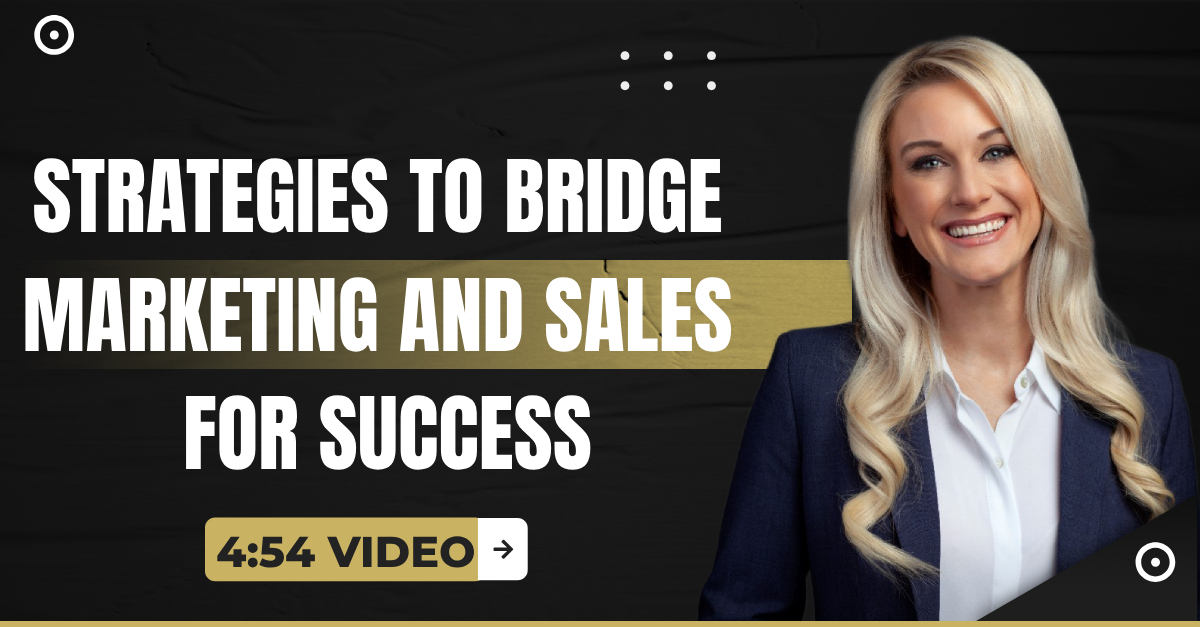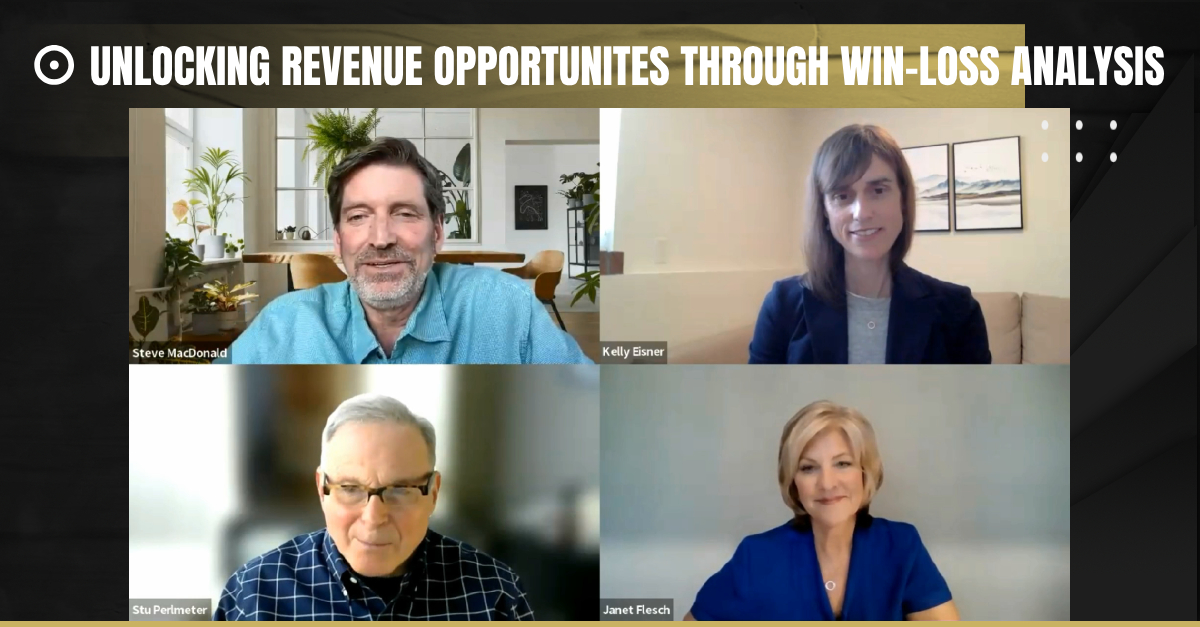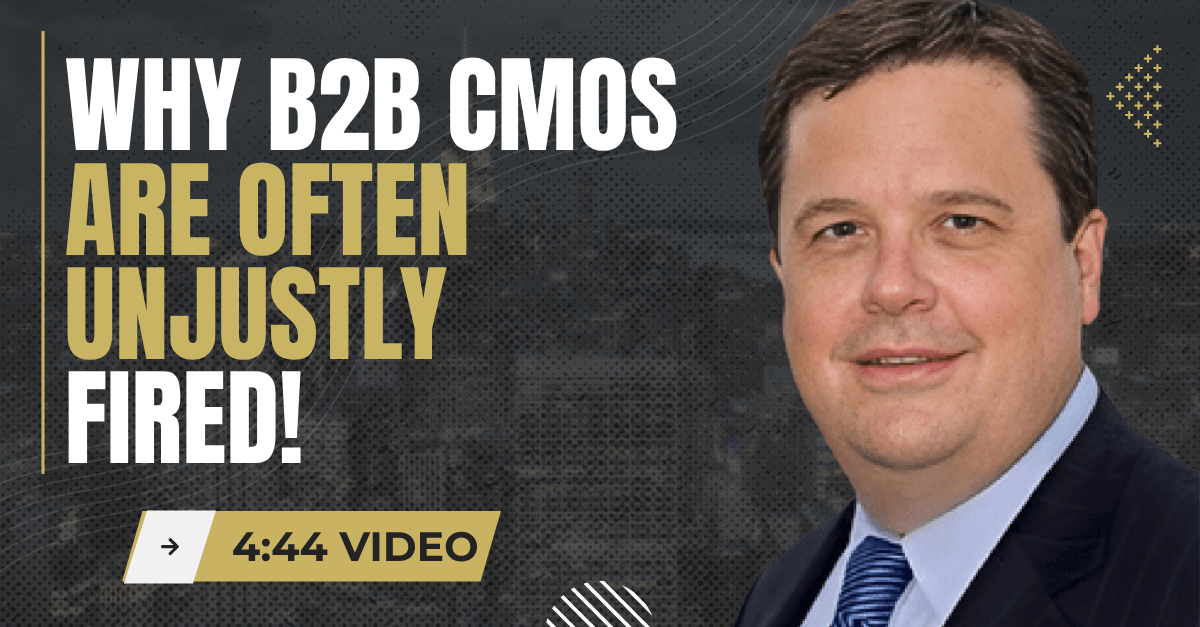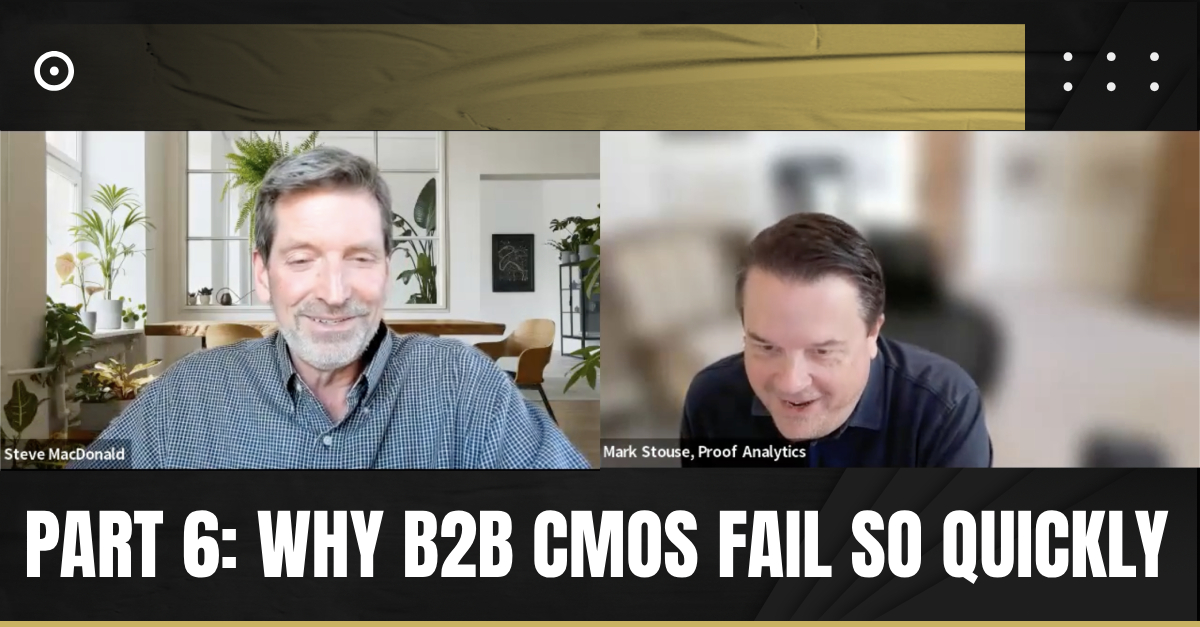(4:01 Video) CRO of the Year & CMO: Championing Culture for Everyone’s Success
Shawn Conahan and Tristan Barnum, the CRO and CMO of Wildfire, explore vital aspects of aligning marketing and sales in B2B. They stress trust, collaboration, and customer success while ensuring incentive plans emphasize long-term over short-term rewards. They underscore team building and fostering a positive company culture as vital for driving success.

Content Marketing Is Complicated. For B2B sales, we simplify your path to being recognized as industry experts with the highest sales closing rates. As B2B founders, we know how to create content that positions your business as an authority, makes the case for your technology, confronts rational/emotional hurdles, and elevates your salespeople to trusted advisors—your competitive advantage in an ABM sales world. OUR PROMISE is to make your reputation a powerful and effective addition to your company’s core competencies.
In this 4:01 video summary of the podcast interview, Shawn Conahan (CRO of the Year) and Tristan Barnum (CMO) at Wildfire discuss the importance of company culture. They talk about successfully creating a positive and supportive work environment that Tristan attributes to 50% of the business’s success.
“We have incredible morale. We have a wonderful culture. We root for each other. We celebrate each other’s successes.” – Tristan Barnum, CMO
They highlight the key elements of their culture, including freedom and responsibility, transparency, and alignment. They emphasize the value of trust and empowerment, allowing their team to make decisions and learn from their failures. The interview provides insights into how companies can cultivate a strong culture that fosters employee morale and business success.
“With great freedom comes great responsibility. Good decision, good. Bad decision, good. No decision, bad.” – Shawn Conahan, CRO of the Year
To learn more, watch the 4:01 video or read the article below.
To catch the full interview with Shawn and Tristan on “The CRO of the Year & CMO Talk Growth & Alignment,” CLICK HERE
“How The CRO of the Year & CMO Champion A Culture of Success”
From an interview with Shawn Conahan, CRO of the Year, and Tristan Barnum, CMO at Wildfire.
Introduction
Building a strong company culture is a goal that every organization aspires to achieve. However, creating an environment where employees feel valued, motivated, and aligned with the company’s vision can often be elusive and challenging. In a recent conversation, Tristan Barnum and Shawn Conahan, leaders at an organization known for its incredible morale and positive culture, shed light on the key factors contributing to their company’s success.
Main Themes for Creating Company Culture
- Investing in Culture: Tristan Barnum emphasizes the importance of investing in the company’s culture. She mentions that they celebrate each other’s successes and have a genuine sense of camaraderie within the organization. This positive culture is not just a facade but deeply ingrained in the company’s DNA. Tristan explains, “We have so much invested in keeping this culture as lovely as it is.”
- Alignment and Transparency: The leaders at this organization understand the significance of alignment and transparency in maintaining a strong culture. Tristan mentions that every decision, whether related to compensation or communication between the executive team and the rest of the company, is made to nurture the culture they have built.
- Shared Perspective: One of the remarkable aspects of this organization’s culture is the shared perspective among its employees. Tristan highlights that despite different roles and responsibilities, everyone sees the company through their own lenses but has the same picture. This alignment of vision and understanding contributes to the overall mood and morale within the organization.
- Alignment Meetings: The organization holds regular in-person meetings every six weeks where employees come together to discuss what’s working, what’s not, and what’s next. Shawn Conahan mentions that seeing how different perspectives converge on the same issues is surprising and intentional during these meetings. This alignment further strengthens the culture and ensures everyone is on the same page.
- Culture of Freedom and Responsibility: The organization has fostered a culture of freedom and responsibility, which sets it apart from many others. Shawn explains that they encourage their team members to spread their wings and make decisions within the constraints of the company’s goals. He emphasizes, “With great freedom comes great responsibility.” The organization trusts its employees to act in a way that moves the entire team forward.
- Safe Environment for Failure: In this organization, failure is not seen as a negative outcome but rather as an opportunity for growth and learning. Shawn highlights that they expect everyone to fail periodically because it is through failures that valuable lessons are learned. This safe environment encourages employees to take risks, innovate, and learn from mistakes.
The themes discussed by Tristan and Shawn have significant implications for organizations striving to build a strong company culture. By investing in culture, organizations can create an environment where employees feel valued and motivated, increasing productivity and employee satisfaction.
Alignment and transparency are crucial in maintaining a positive culture. When employees understand the company’s goals and are involved in decision-making processes, they feel a sense of ownership and commitment. This, in turn, fosters a collaborative and supportive work environment.
Conclusion
Building a strong company culture is not easy, but it is achievable. The insights shared by Tristan and Shawn provide valuable guidance for organizations looking to create a positive and thriving work environment. By investing in culture, promoting alignment and transparency, fostering a culture of freedom and responsibility, and creating a safe environment for failure, organizations can build a culture that attracts and retains top talent.
As the business landscape continues to evolve, the importance of a strong company culture will only grow. Organizations prioritizing culture will have a competitive advantage in attracting and retaining talent, driving innovation, and achieving long-term success. By embracing the principles discussed in this conversation, organizations can create a culture that survives and thrives in the face of challenges and uncertainty.
Building a strong company culture requires intentional effort, alignment, and a commitment to empowering employees. It is a journey that requires continuous investment and adaptation. However, the rewards are immense – a motivated and engaged workforce, increased productivity, and a thriving organization that stands the test of time.
Next Steps
In this summary video, Tristan and Shawn stress the impact of a company’s culture on their success. To elevate your company’s internal and external content success, don’t miss the opportunity to CLICK HERE and schedule a 20-minute strategy session with Steve MacDonald, founder of ConstentStrategies.io.






